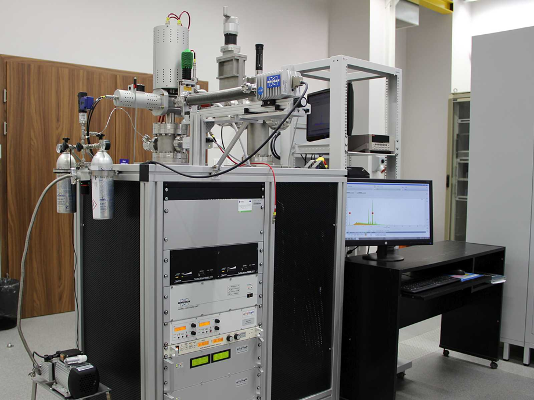
In the Heavy ions laboratory we study atomic processes occurring in highly charged ions (HCI - Highly Charged Ions) during their interaction with an intense and mono-energetic electron beam. These processes take place in a type EBIT (Electron Beam Ion Trap) ion source , where electrons play a dual role. Firstly, their beam with an energy regulated in the range of (1-15) keV produces highly ionized atoms which are accumulated in a special electromagnetic trap, and secondly, this beam acts as a dense electronic target that moves relative to the "cloud" of trapped ions.
Photons with energies in the range of (1-20) keV generated during the interaction of HCI with electrons, are recorded by a silicon XFlash detector (5030 Bruker) with an area of 30 mm2 and energy resolution of 127 eV (FWHM for the Mn Kα line). The observed X-rays are a signature of atomic processes such as ionization, radiation recombination or exotic, multi-electron resonance recombination. Alternatively, the "opening" of the electromagnetic trap of generated ions allows for an efficient extraction of the HCI beam from the
source and directing it, if necessary, to subsequent experiments (operation of the apparatus in the EBIS - Electron Beam Ion Source regime). In this case, the selection of a given ion charge state is enabled by the Wien filter incorporated in the apparatus.
The source of ions, installed in the Laboratory, allows for a complete removal of electrons from atoms with the atomic number up to Z = 18 (Ar), and in case of Z = 54 (Xe) it is possible to obtain a charge state of around 30. It is worth noting that the intensity of the electromagnetic field binding single electrons in such ions can, by many orders of magnitude, exceed the intensity of the fields which matter is exposed to, for example a beam of light or even the most powerful lasers in the world. This translates into unique possibilities of using HCI in studies of many atomic processes, such as di-electron recombination or Radiative Auger Effect (RAE). The creation of highly charged states requires maintaining a vacuum of 10-10 mbar around the source. The apparatus (Dresden EBIT I) installed in the Laboratory was produced by DREEBIT GmbH from Dresden.

